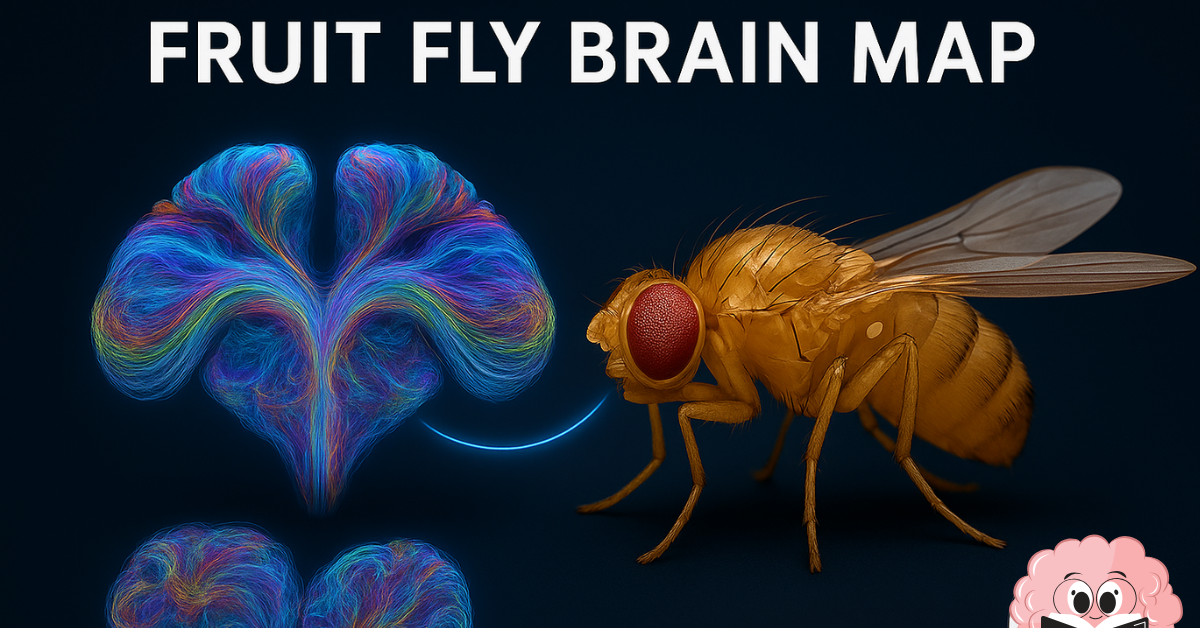Researchers have achieved the first comprehensive mapping of the entire adult fruit fly nervous system, including the brain and ventral nerve cord. This groundbreaking study compared the connectomes of male and female flies, revealing previously unknown sex-specific neurons and connections. Notably, they identified a female-specific neural pathway explaining distinct mating and egg-laying behaviors. This detailed “roadmap” of the fruit fly brain will significantly aid future neuroscience research.
You’ve probably heard about fruit flies (those tiny bugs that hover around your bananas) — but now scientists have done something crazy cool with their brains. We’re talking about the first-ever complete “roadmap” of the fruit fly’s nervous system, also called a connectome.
Let’s dive into why this is such a big flex for science — and why you might want to care.
What’s a “Brain Map,” Exactly?
Think of a brain map like a GPS for the nervous system. Scientists track every neuron (brain cell) and every little road (aka connection) that links them. In this case, the roadmap covers both the brain and the “spinal cord” of a fruit fly — officially known as the ventral nerve cord.
Before now, nobody had the full map. Research usually stopped at the “neck” because it was super hard to study what connects the fly’s brain to the rest of its body. But now? Scientists have crossed that boundary.
Why Fruit Flies?
Great question. Fruit flies are the lab rats of the insect world. They’re simple, they breed fast, and their brains are small (but not dumb!). Despite their size, their nervous systems are surprisingly similar to ours in how they process information and make decisions. So if we learn how their brains work, we get hints about how ours work too.
Fruit Fly: Quick Profile

What Did the Scientists Actually Do?
Researchers from Leipzig University (shout-out to Germany) and other places pulled off something no one else had:
- They mapped every neuron in the adult fruit fly’s nervous system.
- They created 3 full connectomes: one female brain, one male nerve cord, and one female nerve cord.
- They looked at how the brain connects to the body, especially through the neck area.
- They found new cells and pathways nobody had seen before.
Male vs Female Brain Differences? Yup.
Here’s where it gets juicy: when comparing male and female flies, they found some cells only exist in one sex. That’s right — there are brain parts in females that males don’t have, and vice versa.
One key player is a neuron called aSP22. In females, this neuron links up with other female-only neurons. The result? Different behaviors.
- Female flies stretch out their abdomens — likely to lay eggs.
- Male flies curl theirs forward — to, uh, get busy.
This is the first real explanation of why certain behaviors are sex-specific. Boom.
Why This Matters (Besides It Being Cool)
This full brain map is like giving scientists a cheat code. Instead of guessing where to look, they can now:
- Study specific neurons to see what they do.
- Understand how brain decisions turn into physical actions.
- Save time and money on future experiments.
It’s a foundational tool that’s going to accelerate brain research — not just in bugs, but eventually in more complex animals (maybe even us).
Final Thoughts: Small Brain, Big Moves
This whole project is like finding the user manual to one of nature’s most efficient little machines. The fruit fly’s brain might be tiny, but this map is a massive step forward. Think of it as Google Maps for neuroscience, and the journey’s just getting started.

